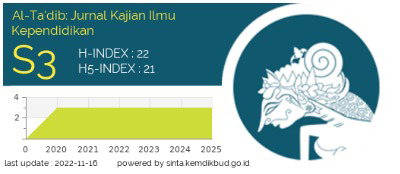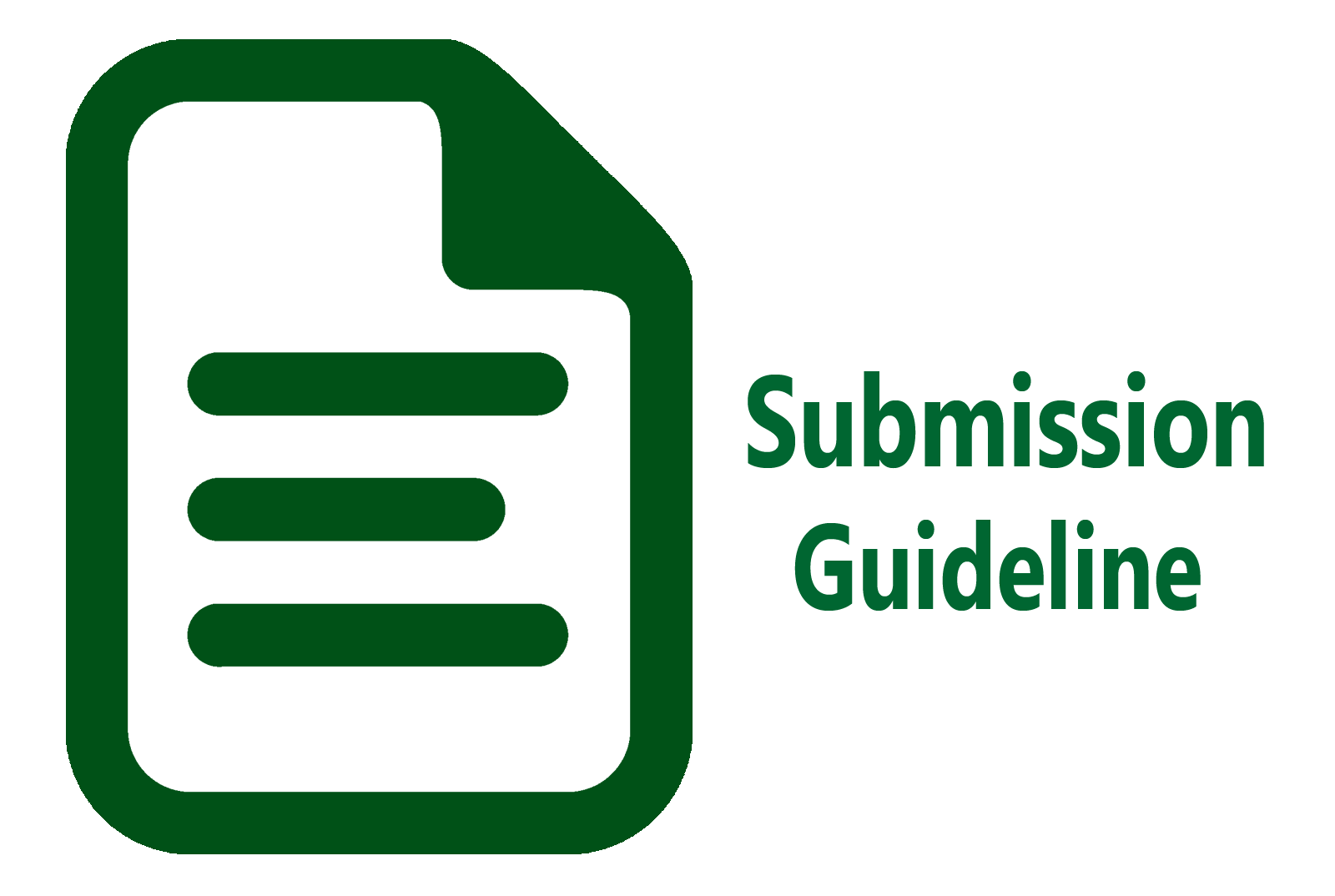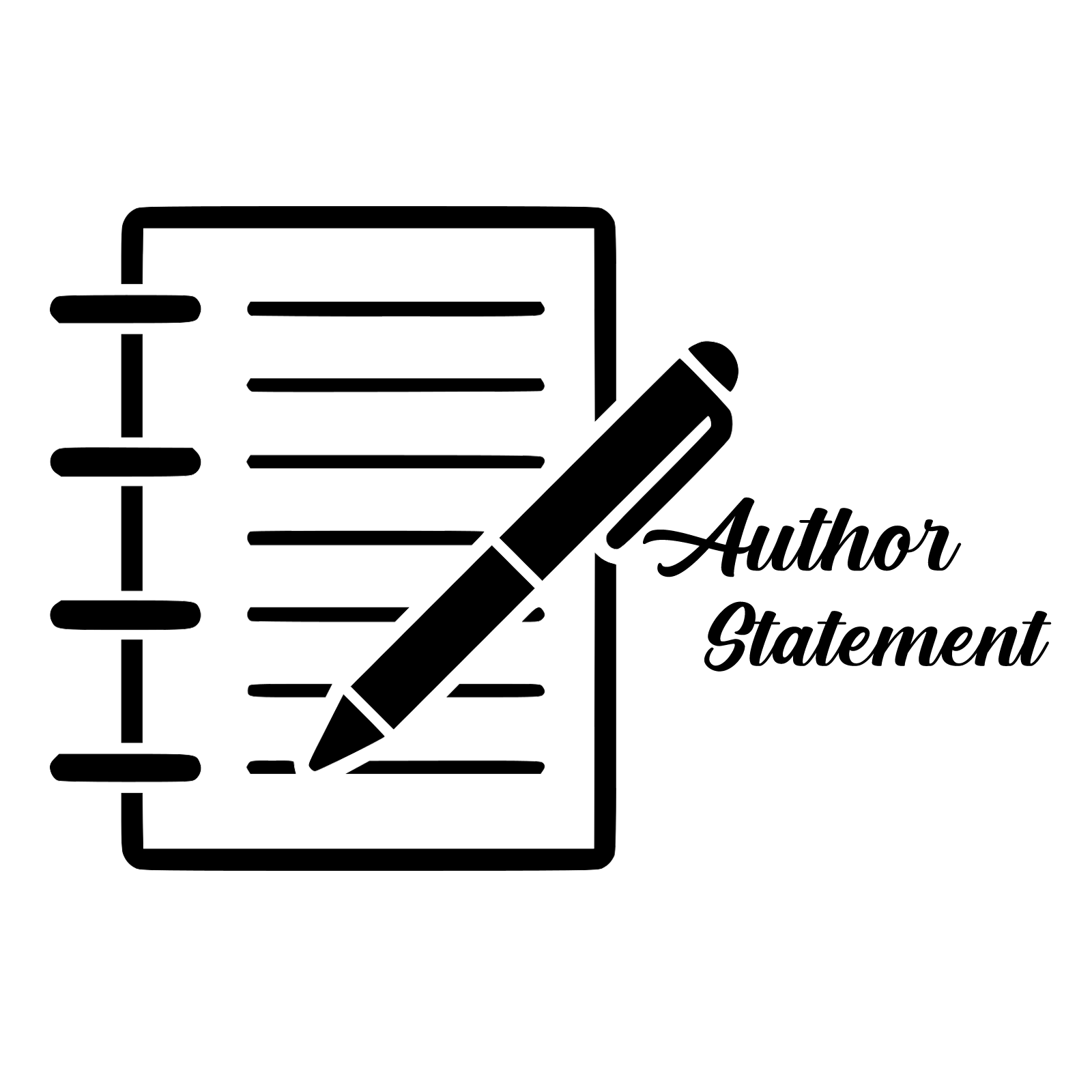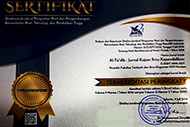Students’ Metalinguistic Awareness in L2 Writing: The Case of Grammarly-Mediated Feedback
Abstract
This case study aims to explore students’ perceptions of their metalinguistic awareness in L2 writing mediated by Grammarly as online feedback tool. Data garnered from twenty participants’ questionnaire and reflection were analyzed. The findings reveal that the participants perceive the online feedback tool facilitates their drafting process in terms of grammatical awareness. In other words, the online grammar checker could be help to raise their metalinguistic awareness in L2 writing. This study implies that language teacher and teacher educator could utilize this online tool in learning and teaching process in order to raise learners’ metalinguistic awareness as well as learner autonomy.
Keywords:Grammarly; L2 writing; metalinguistic awareness; online feedback tool
Full Text:
PDFReferences
Alipour, S. (2014). Metalinguistic and linguistic knowledge in foreign language learners. Theory and Practice in Language Studies, 4(12), 2640-2645.
Altman, C., Goldstein, T., & Armon-Lotem, S. (2018). Vocabulary, metalinguistic awareness and language dominance among bilingual preschool children. Frontiers in Psychology, 9, 1-16.
Bryant, P., MacLean, M., & Bradley, L. (1990). Rhyme, language, and children's reading. Applied Psycholinguistics, 11(3), 237-252
Cavaleri, M. R., & Dianati, S. (2016). You want me to check your grammar again? The usefulness of an online grammar checker as perceived by students. Journal of Academic Language and Learning, 10(1), A223-A236.
Chen, P. J. (2015). Learners’ metalinguistic and affective performance in blogging to write. Computer Assisted Language Learning, 29(4), 790-814.
Clyne, M. (2003). Towards a more language centered approach to plurilingualism. Bilingualism: Beyond Basic Principles, 5(7), 43-55.
Daniels, P., & Leslie, D. (2013). Grammar software ready for EFL writers? OnCUE Journal, 9(4), 391-401.
Darayani, N. A., Karyuatry, L. L., & Rizqan, M. D. A. (2018). Grammarly as a tool to improve students’ writing quality. Edulitics (Education, Literature, and Linguistics) Journal, 3(1), 36-42.
Dooly, M. (2007). Promoting metalinguistic awareness through computer-supported collaborative learning. Language Awareness, 16(1), 57-74.
Elola, I., & Oskoz, A. (2010). Collaborative writing: Fostering foreign language and writing conventions development. Language Learning & Technology, 14(3), 51–71.
Faller, J. M. V. (2018). Grammarly investigation into EFL writing issues involving Omani learners. International Journal of Language and Linguistic, 5(3).
Ghufron, M. A., & Rosyida, F. (2018). The role of Grammarly in assessing English as a foreign language EFL writing. Lingua Cultura, 12(4), 395-403.
Gombert, J. E. (1992). Metalinguistic development. New York: University of Chicago Press.
Hawkins, E. (1992). Awareness of language/knowledge about language in the curriculum in England and Wales: An historical note on twenty years of curricular debate. Language Awareness, 1(1), 5-17.
Hyland, K., & Hyland, F. (2006). Feedback in second language writing: Contexts and issues. Language Teaching, 39(2), 83-101.
Jackson, R. L., Drummond, D. K., & Camara, S. (2007). What is qualitative research? Qualitative Research Reports in Communication, 8(1), 21-28.
Jones, S., Myhill, D., & Bailey, T. (2013). Grammar for writing? An investigation of the effects of contextualized grammar teaching on students’ writing. Reading and Writing, 26(8), 1241-1263.
Karyuatry, L. (2018). Grammarly as a tool to improve students’ writing quality:Free online proofreader across the boundaries. Jurnal Sosial dan Humaniora, 2(1), 83-89.
Lee, I. (1997). ESL learners’ performance in error correction in writing: Some implications for teaching. System, 25(4), 465-477.
Misesani, D. (2019). Assessing students’ metalinguistic awareness: The ability to detect ambiguity. Jurnal Akrab Juara, 4(1), 240-254.
Nova, M. (2018). Utilizing Grammarly in evaluating academic writing; A narrative research on EFL students’ experience. Premise Journal of English Education and Applied Linguistic, 7(1), 80-96.
Qassemzadeh, A., & Soleimani, H. (2016). The impact of feedback provision by Grammarly software and teachers on learning passive structures by Iranian EFL learners. Theory and Practice in Language Studies, 6(9), 1884-1894. DOI: 10.17507/tpls.0609.23
Roehr, K., & Gánem-Gutiérrez, G. A. (2009). The status of metalinguistic knowledge in instructed adult L2 learning. Language Awareness, 18(2), 165-181.
Sadoski, M., & Paivio, A. (2001) Imagery and text: A dual coding theory of reading and writing. Mahwah, NJ: Erlbaum.
Saldana, J. (2013). The coding manual for qualitative researchers. Sage.
Sarré, C., Grosbois, M., & Brudermann, C. (2019). Fostering accuracy in L2 writing: Impact of different types of corrective feedback in an experimental blended learning EFL course. Computer Assisted Language Learning, 34(5) 707-729,
Sinar, B. (2018). Promoting metalinguistic awareness in a classroom to improve reading comprehension. Acta Didactica Norge,12(2), 11-22.
Thi, N. K., & Nikolov, M. (2021). How teacher and Grammarly feedback complement one another in Myanmar EFL students’ writing. The Asia-Pacific Education Researcher, 1-13.
Vanderpyl, G. D. (2012). The process approach as writing instruction in EFL (English as foreign language) classrooms. Unpublished thesis. USA: SIT Graduate Institute.
DOI: http://dx.doi.org/10.31332/atdbwv14i2.1986
Refbacks
- There are currently no refbacks.
Copyright (c) 2021 Muthiah Hidayatun, Sitti Nurfaidah, Isna Humaera, Muragmi Gazaly

This work is licensed under a Creative Commons Attribution-NonCommercial-ShareAlike 4.0 International License.
| Indexing: |










